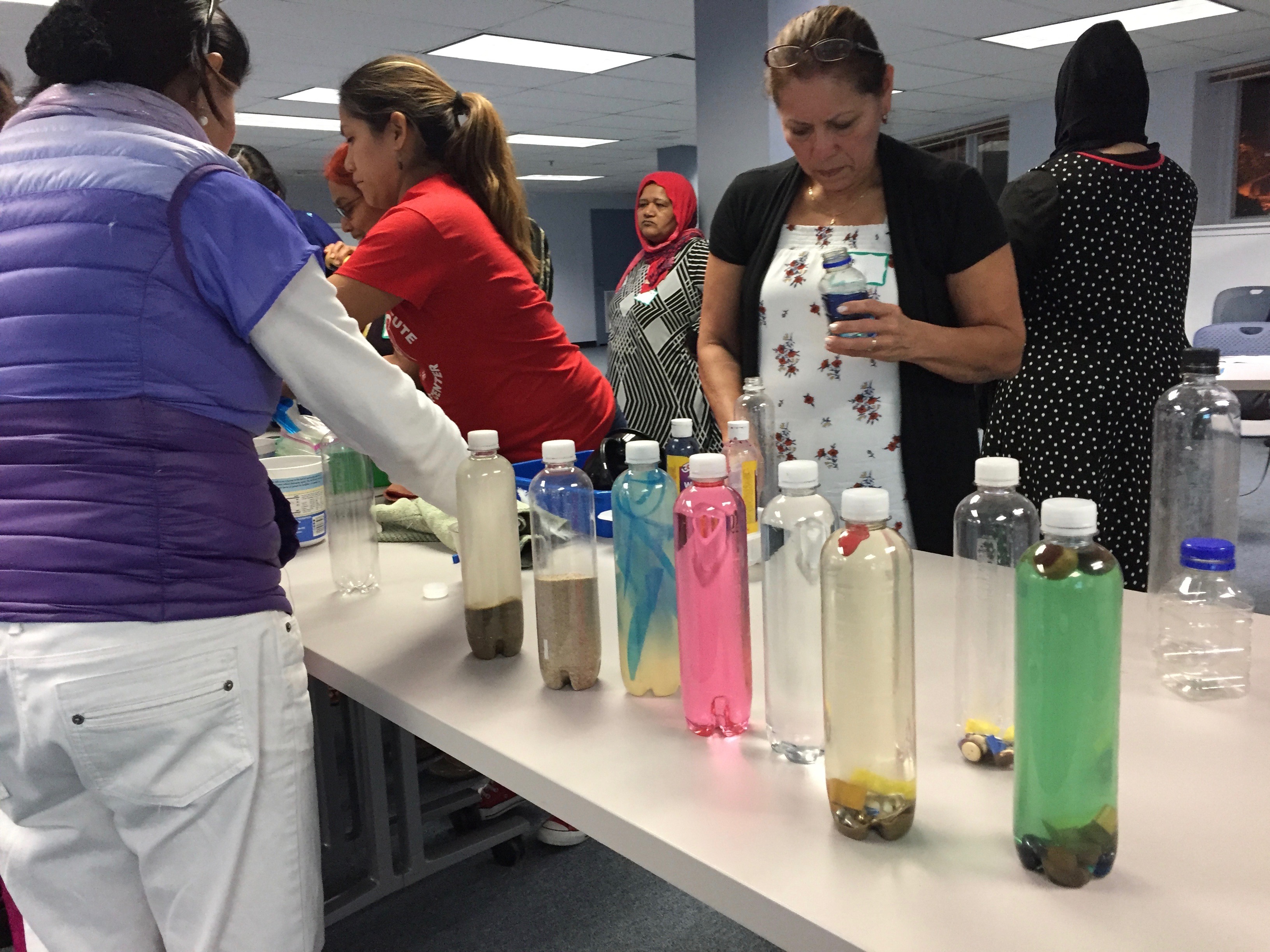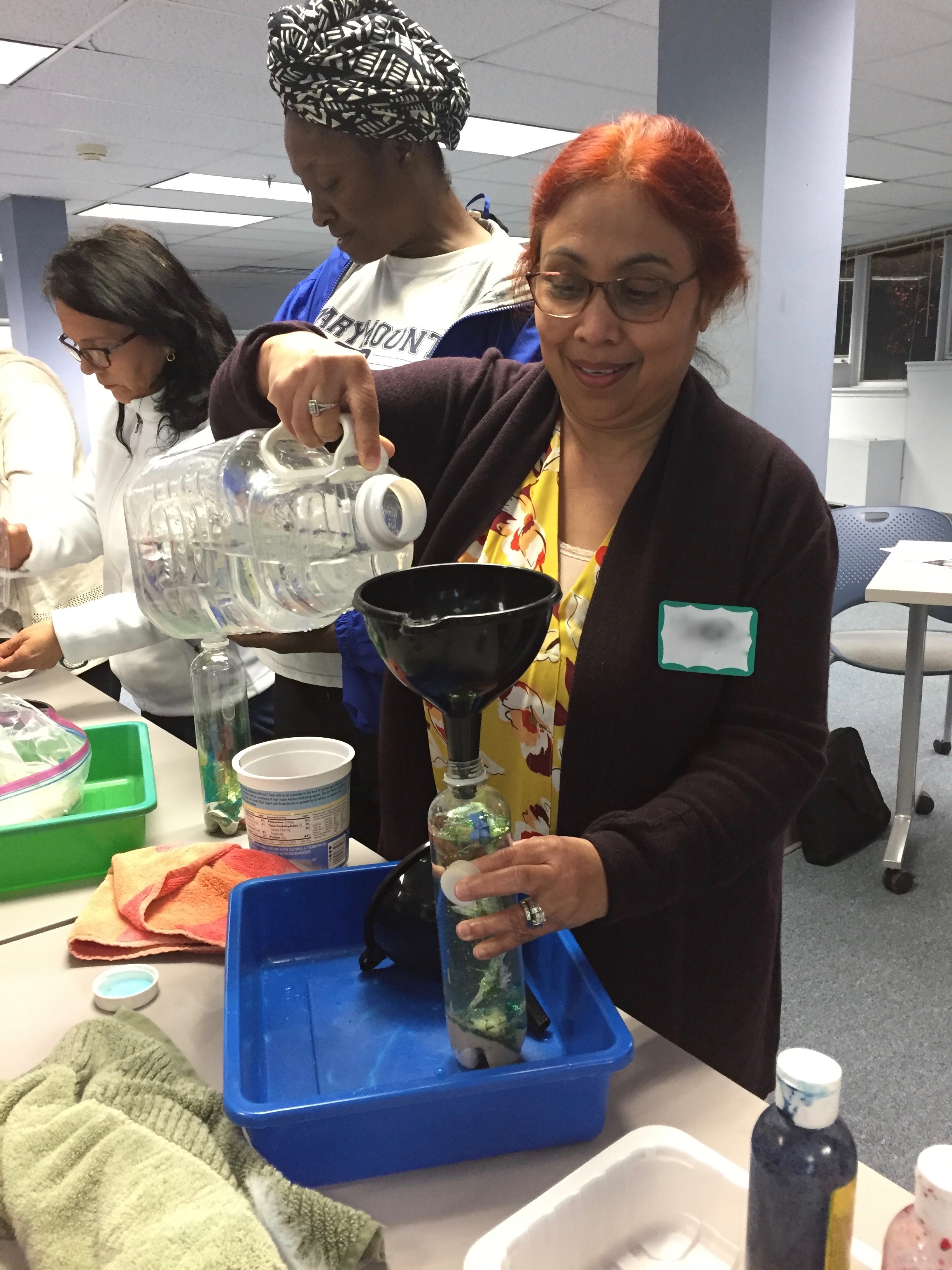Discovery bottles: Learning moments for children and adults
By Peggy Ashbrook
Posted on 2017-11-20
“Discovery bottles” are one way to allow children to use small objects without putting them in their mouths. These bottles for open-ended exploration can be constructed to relate to many different science concepts and topics. Other bottles are made expressly for helping children calm themselves as needed. See the Early Years blog post of September 17, 2009 or Sandy Watson’s 2008 article, “Discovery Bottles,” about using bottles filled with different materials as tools for science explorations. (Watson, Sandy. 2008. Discovery Bottles. Science and Children. 45(9): 20-24) Of course there is only “discovery” when children are first playing with the bottles and later when they talk about what they observe and think about it. None of the Discovery Bottles I’ve made have ever held children’s interest for more than a few months. Pass them on to another classroom or child care provider when your children have finished their discoveries.
Child care providers at a professional development session showed how important open exploration also is for adults. I was presenting about using Discovery Bottles to engage infants to eight year olds. I shared examples of using bottles filled with water and objects to play with and roll, and to observe water flow, air bubbles, magnification, color change (looking through colored water), floating and sinking objects, counting the number of objects, identifying shapes of objects, and for soothing oneself. Then each participant made their own to use for a purpose they chose and later described.
One provider and his spouse made a bottle half filled with water and just one cube made from thick art foam. He intended it to be a way to explore the level of a surface, to see how the cube floated when the bottle was laid sideways on different surfaces. Unexpectedly the cube stuck to the side of the bottle when he rotated the bottle, rather than staying afloat in the water. He wondered why the cube stuck there, wondering if static electricity was involved.
 We talked with the small group at the table, then rubbed the bottle on our hair and tested to see if another cube of art foam would stick to the outside of the bottle. It did not. We talked about how the inside was different from the outside of the bottle and they identified water as being present inside. So he wet the outside of the bottle with water and put a cube onto the wet outside. Since the cube stuck in the water on the outside of the bottle he said he thought it was something about the water that made the cube stick to the bottle. We talked about how water sticks to our hands when we wash them and that children also experience this. There is a word for that phenomenon, “adhesion.” Knowing a word doesn’t help us understand why a phenomenon happens, but it does give us a quick way to talk about it. The ‘why’ can come much later, after children have had many experiences observing the properties of different states of matter and building structures out of many smaller parts, when children encounter the fact that matter is composed of atoms and molecules in middle school.
We talked with the small group at the table, then rubbed the bottle on our hair and tested to see if another cube of art foam would stick to the outside of the bottle. It did not. We talked about how the inside was different from the outside of the bottle and they identified water as being present inside. So he wet the outside of the bottle with water and put a cube onto the wet outside. Since the cube stuck in the water on the outside of the bottle he said he thought it was something about the water that made the cube stick to the bottle. We talked about how water sticks to our hands when we wash them and that children also experience this. There is a word for that phenomenon, “adhesion.” Knowing a word doesn’t help us understand why a phenomenon happens, but it does give us a quick way to talk about it. The ‘why’ can come much later, after children have had many experiences observing the properties of different states of matter and building structures out of many smaller parts, when children encounter the fact that matter is composed of atoms and molecules in middle school.
Disclaimer: The views expressed in this blog post are those of the author(s) and do not necessarily reflect the official position of the National Science Teaching Association (NSTA).




